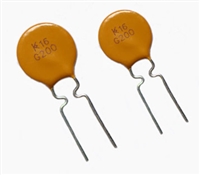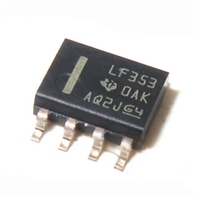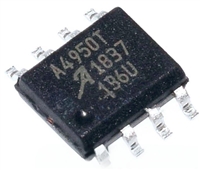GS81302TT19/37AGD-450/400/375/333
Background
Common I/O SRAMs, from a system architecture point of view, are attractive in read dominated or block transfer applications.
Therefore, the SigmaDDR-II+ SRAM interface and truth table are optimized for burst reads and writes. Common I/O SRAMs are
unpopular in applications where alternating reads and writes are needed because bus turnaround delays can cut high speed
Common I/O SRAM data bandwidth in half.
Burst Operations
Read and write operations are "Burst" operations. In every case where a read or write command is accepted by the SRAM, it will
respond by issuing or accepting two beats of data, executing a data transfer on subsequent rising edges of K and K, as illustrated in
the timing diagrams. This means that it is possible to load new addresses every K clock cycle. Addresses can be loaded less often,
if intervening deselect cycles are inserted.
Deselect Cycles
Chip Deselect commands are pipelined to the same degree as read commands. This means that if a deselect command is applied to
the SRAM on the next cycle after a read command captured by the SRAM, the device will complete the two beat read data transfer
and then execute the deselect command, returning the output drivers to High-Z. A high on the LD pin prevents the RAM from
loading read or write command inputs and puts the RAM into deselect mode as soon as it completes all outstanding burst transfer
operations.
SigmaDDR-II+ Burst of 2 SRAM Read Cycles
The SRAM executes pipelined reads. The status of the Address, LD and R/W pins are evaluated on the rising edge of K. The read
command (LD low and R/W high) is clocked into the SRAM by a rising edge of K.
SigmaDDR-II+ Burst of 2 SRAM Write Cycles
The status of the Address, LD and R/W pins are evaluated on the rising edge of K. The SRAM executes "late write" data transfers.
Data in is due at the device inputs on the rising edge of K following the rising edge of K clock used to clock in the write command
(LD and R/W low) and the write address. To complete the remaining beat of the burst of two write transfer, the SRAM captures
data in on the next rising edge of K, for a total of two transfers per address load.
Special Functions
Byte Write Control
Byte Write Enable pins are sampled at the same time that Data In is sampled. A high on the Byte Write Enable pin associated with
a particular byte (e.g., BW0 controls D0–D8 inputs) will inhibit the storage of that particular byte, leaving whatever data may be
stored at the current address at that byte location undisturbed. Any or all of the Byte Write Enable pins may be driven High or Low
during the data in sample times in a write sequence.
Each write enable command and write address loaded into the RAM provides the base address for a 2-beat data transfer. The x18
version of the RAM, for example, may write 36 bits in association with each address loaded. Any 9-bit byte may be masked in any
write sequence.
Rev: 1.01a 3/2019
5/25
© 2017, GSI Technology
Specifications cited are subject to change without notice. For latest documentation see http://www.gsitechnology.com.






 NTC热敏电阻与PTC热敏电阻的应用原理及应用范围
NTC热敏电阻与PTC热敏电阻的应用原理及应用范围

 GTO与普通晶闸管相比为什么可以自关断?为什么普通晶闸管不能呢?从GTO原理、应用范围带你了解原因及推荐型号
GTO与普通晶闸管相比为什么可以自关断?为什么普通晶闸管不能呢?从GTO原理、应用范围带你了解原因及推荐型号

 LF353数据手册解读:特性、应用、封装、引脚说明、电气参数及替换型号推荐
LF353数据手册解读:特性、应用、封装、引脚说明、电气参数及替换型号推荐

 A4950资料手册解读:特性、应用、封装、引脚功能、电气参数及代换型号
A4950资料手册解读:特性、应用、封装、引脚功能、电气参数及代换型号
